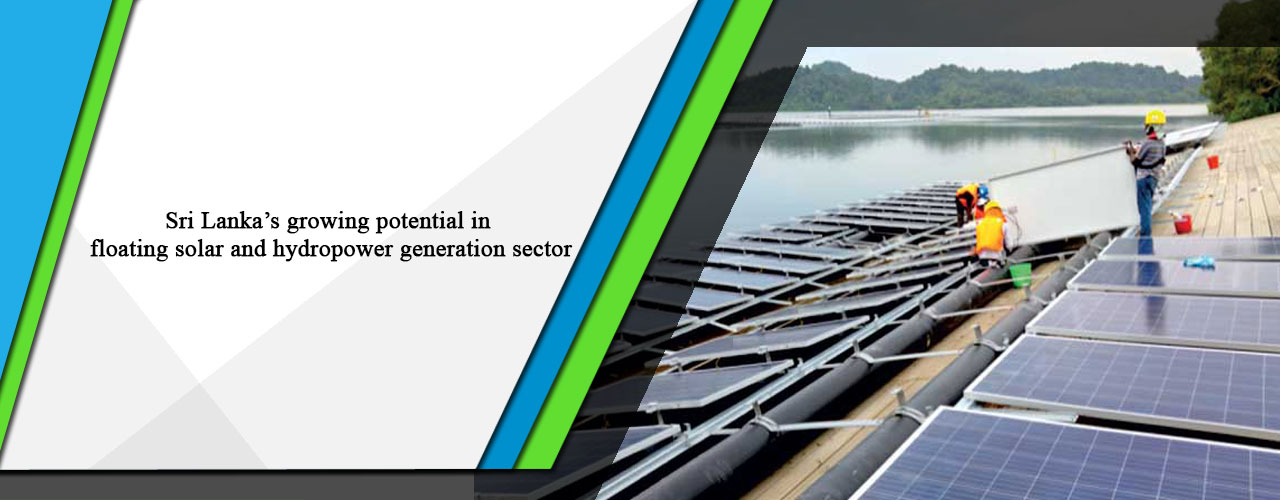Sri Lanka’s growing potential in floating solar and hydropower generation sector
Sri Lanka needs to add an estimated 11,000 MW to its power grid within the next two decades to meet growing demand. Adding large-scale floating solar plants would not only make electricity greener and affordable but improve Sri Lanka’s overall economic competitiveness as well.
Sri Lanka’s energy policy is underpinned by the Government’s ambitious target of generating 70% of power from renewables by 2030. Solar power is one of the cheapest sources of energy, and Sri Lanka has strong solar resources. However, ground-mounted solar power requires a lot of land and given Sri Lanka’s high population density, agriculture needs, and declining forest cover, land access can be challenging.
“Floating solar can potentially work well with hydro power generation. Any new power generation also requires new power infrastructure but if you put solar near hydro, the same power infrastructure can be used. Sri Lanka has many water bodies that could potentially be used for floating solar,” said World Bank Senior Water Supply and Sanitation Specialist Kristoffer Welsien.
By identifying large water bodies for floating solar, Sri Lanka also can tap into the multiple benefits of lower evaporation, higher solar panel efficiency due to cooling effect, complementarity with hydro power generation and efficient management of peak hours. While environmental and social impacts need to be carefully studied and managed, strategic, and well-managed floating solar projects could also improve water quality by limiting algae growth.
The synergies from combining floating solar with existing hydropower plants can be significant and can add much-needed diversity to Sri Lanka’s power generation mix. Sri Lanka’s power mix could potentially benefit from greater solar power generation during the day and a switch to hydro in the night. Seasonally, floating solar could produce power during the dry months, while throughout the monsoon rains, hydro could play a larger role in the energy mix. (Source: Daily FT)
OSL take:
Sri Lanka’s renewable energy generation sector is fast becoming a growing business/investment opportunity in the island. Sri Lanka has adopted a policy to ensure thar the country’s renewable energy generation component is increased to 70% by 2030. Given the growing demand for power in Sri Lanka with its ongoing development programme as well as the country’s emergence as a business destination in the South Asian region, foreign businesses/investors could explore the expanding opportunities in Sri Lanka’s renewable energy generation sector.
| Article Code : | VBS/AT/02092021/Z_8 |

